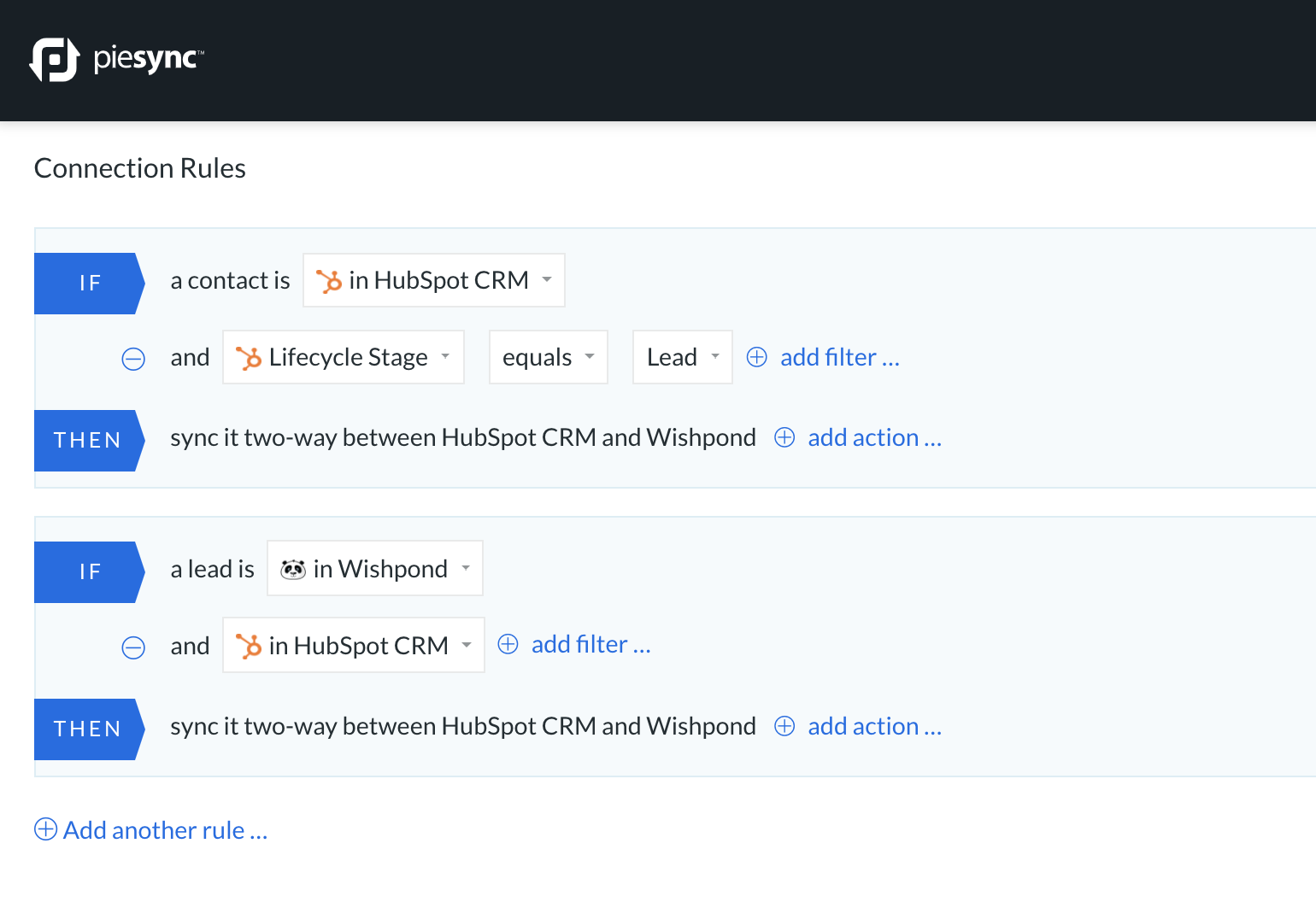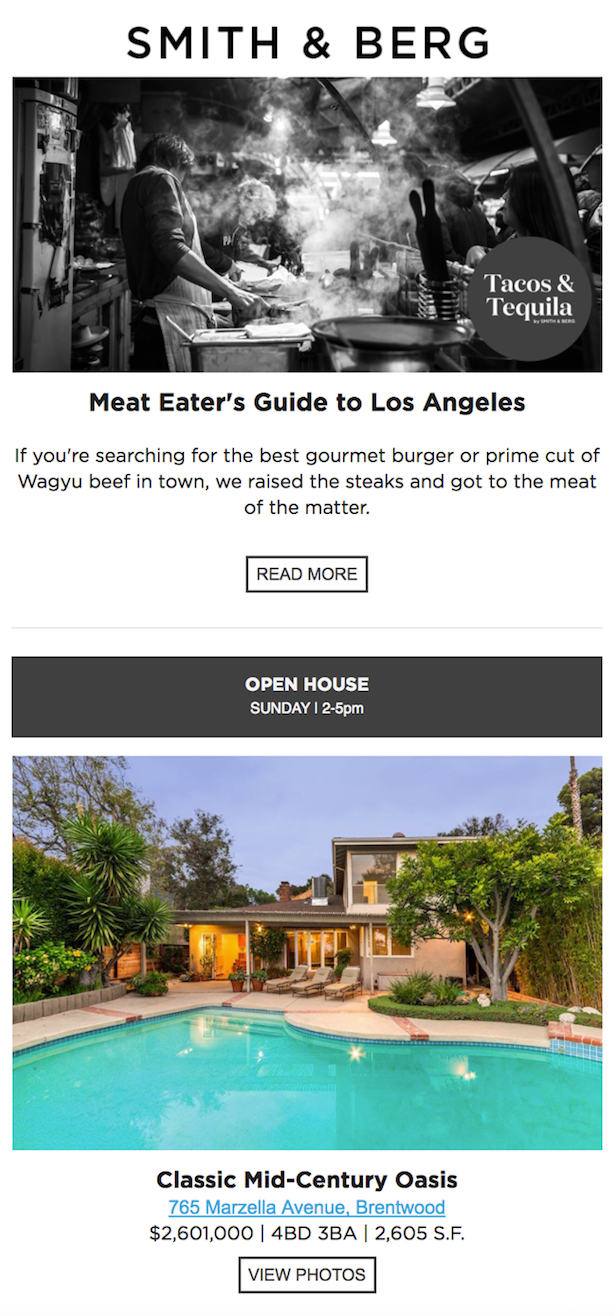The time to stop leaving printed ads on mailboxes has come. With the unstoppable wave of digital transformation, there are many more effective ways to offer your services as a realtor.
The reason why so many real estate agents have become part-time marketers is simply that it works. And within all the possibilities that digital marketing has for realtors, email marketing stands out.
Email marketing is one of the most effective ways to reach out to a large number of current and potential clients in a short time. In a survey made by SaleCycle, 59% of respondents said that marketing emails influence their purchase decisions.
But creating one of those email campaigns that actually gets results, takes a bit more than a few clicks. That’s why we’ve made a list of 10 indispensable tips for the success of your real estate email marketing strategy.
1.Choose the Right Email Marketing App
Choosing an emailing platform is not an easy task. There’s an overwhelming amount of applications out there with different features, prices and focus. The problem is to choose just one.
Each real estate business has its structure and needs. So there’s not such a thing as a single app that works for absolutely everyone. There are, however, some key aspects you should keep in mind before deciding:
- Search for a drag & drop interface: because you are a realtor and your time is money, you don’t need to waste it trying to figure out HTML code. There are plenty of amazing tools where all you have to do is drag a drop the assets you need on your email (buttons, images, text, etc.)

- Find a tool where you can automate different types of emails: Make sure the tool you are using can support the different types of emails you need. Start by asking yourself what types of emails will you be sending. Is it newsletters, drip campaigns, follow up emails or all of the previous ones?
- Make sure you can manage different lists and segmentation: we’ll dig into the benefits of segmentation later on. For now, just keep in mind that segmenting your database according to particular characteristics is a must-have for a successful email campaign.
Marketing tip:
If after considering all these aspects you still have doubts, you can check out review sites like G2Crowd and GetApp to read reviews about different email marketing applications.
2. Customize Your Email with Segmentation & Targeting
Having an email marketing app and working with subscriber lists is a great way to send out messages to big databases. But most times, you’ll want to send out targeted emails.
Segmentation and targeting should happen long before clicking that “Send” button. You need to make sure that the email you are sending is relevant for the people behind that list.
Keep the following in mind:
- Targeting refers to the strategy behind dividing a large audience into groups according to common characteristics. You’ll want to identify the different types of customers or prospects you have.
In real estate, your two main target audiences could be buyers and sellers. Sounds too broad? Don’t worry, you can narrow it down with segmentation.
- Segmentation is dividing your target audiences into smaller groups according to specific aspects they share. For realtors, this could be based on location, the type of property, and any other characteristic of a specific group of potential buyers/sellers.
In this example, the realtor created a segment for the people who visited a particular open house:

AE Home Group believes that segmentation has taken their business to another level. They segment their potential buyers according to the type of property they might be interested in purchasing and address each one of their segments with relevant communications. Here’s what Jeff Miller, real estate agent at AE Home Group says about it:

After the first contact with their potential buyers, they can label them on their address books according to categories such as luxury buyers, growing family, retirement homes, etc.
Marketing tip:
You can use labels, categories, and other attributes to segment a database. This can be done manually (not recommended) or automatically. Keeping the software you use to collect your prospects’ information in sync with your email marketing tool can save you a lot of time.
3. Personalization is Key
Starting an email with “Hey there” is far from ideal. To avoid that, you need to collect customer and prospect data and use it in your email marketing campaigns.
There are several ways of gathering data or capturing leads (as marketers would say). Web forms are becoming increasingly popular among realtors, they are required when a user downloads an ebook, asks for further information or subscribes to a newsletter.
The main goal of a form is to collect contact information such as email, name, phone number, etc. This information will ideally be stored within a CRM and in sync with your email marketing tool (we’ll examine this connection later on this blog post).
If your prospects or clients provided their names in a web form, they expect you to know who they are.
It’s easy to personalize the salutation on most email marketing tools using “tags.” These tags tell your email platform where to add your subscriber’s name. You’ll find that tags come in different formats, but they usually have a structure similar to this one: {{first_name}} .
Marketing tip: For some email marketing tools, there are other types of tags to personalize even more the text on your emails. If you’ve collected information about your subscribers’ location or the type of property they are interested in, you might be able to add tags with that info and show off with your knowledge about them.

4. Always Sync with your CRM
Segmenting and personalizing your real estate emails is key to the success of your campaigns. But it might sound like a difficult thing to accomplish if you don’t have the time or resources to manage your contacts database. However, with the right tools in place, it can be an easy and intuitive process.
First, ask yourself: Where are my contacts stored?
If you are not using a CRM, it is time to get started. A CRM’s main goal is to centralize all your contact information and ensure that you don’t lose sight of potential business opportunities.
CRM platforms are playing an important role in the success of realtors. The implementation of CRMs among realtors is increasing so fast that it’s estimated that the real estate management software market will reach $12.89 billion in 2025.
For realtors, their network and the contact information they own is their biggest asset. A CRM allows you to organize and manage their entire database. In that sense, it becomes the central piece of your business.
Since your CRM contains your main database, it is also the main source of information to segment and personalize your email marketing campaigns. But how can you make sure your CRM and your email marketing tool are integrated?
Importing/exporting your CRM’s database manually is possible, but not effective. It will take hours of your time and your contacts won’t stay up-to-date for long.
Using an Integration Platform as a Service (iPaaS) is a good alternative. It allows you to establish a connection between your CRM and other applications. That way you can enrich the central piece of your business (your contacts) with relevant information and have your CRM’s intelligence available in your other apps.

Marketing tip: Because you probably don’t need your entire database in sync, make sure you pick a tool that allows you to customize your workflow so you can choose which contacts to sync and how.
5. Automate your Email Marketing Campaigns
According to Optinmonster, automated emails offer 60% more conversions than broadcast emails. But wait… what are those?
When we talk about automated emails we are usually referring to trigger-based emails. Whenever a prospect or customer fills out a form on your website, subscribe to a service or download one of your ebooks, this action triggers an email.
One of the main advantages of automated emailing vs. other types of email is timing. Optinmonster states that these trigger-based emails get 119% higher click rates, and it makes absolute sense. If someone expresses interest in a property, and immediately after receives a relevant email about it, he or she is more likely to click through.
Automated or trigger-based emails can be used across the entire customer journey. In early stages, when you are capturing new leads with awesome content, it’s always timely to refer them to another resource. Here’s an example of an automated email received by a lead who subscribed to an emailing list:

Marketing tip:
Automation can also be used to close deals faster. Brian Burds works as a real estate agent for Century 21. He is not only automating emails, but also text messages after the first interaction with prospects.
6. Video for Communication
We’ve established that email marketing is a great way to reach out to customers and prospects. But sending out an email doesn’t mean you’ll deliver a message. The person at the other end has to open it and engage with the content.
Adding a video to your email is probably one of the best ways to deliver a clear message and gain engagement. According to The Close, emails with a video attached receive 81% more replies than other emails.
For realtors, videos can be used across the entire customer journey. You can create a video to introduce yourself, a walk-through video or just for educational purposes. Some agents even personalize their videos to make it even more relevant.
Ultimately, video communications are the most direct way to talk to your potential clients. They establish trust, a key ingredient to hire a real estate agent or agency.
Thinking about how much that is going to cost you?
Don’t worry! You don’t have to create a super production. You would be surprised by how many people appreciate the honesty of a homemade video.
In most email marketing tools you can easily upload and embed videos. If you are already using a video platform such as YouTube or Vimeo, you can add the video’s URL.
Marketing tip:
If you go for this last option, make sure your video shows a thumbnail image to capture your receivers’ attention.
7. Add Value to Your Email
If you’ve been working as a realtor for a while, you know by now that building a relationship with your customers is as important than to close a deal, or maybe even more.
One of the best ways to nurture a relationship is to make sure that your email campaigns contain valuable information. A way to do so is by creating content that can be shared via email.
That content can be on blogs, eBooks, checklists, videos, customer stories, invites to events or tips about the city your potential buyers want to live in. Here’s how Smith & Berg Partners did it:

An easy way to create content is by writing down those unique tips & tricks that only you, as a real estate agent or resident of the area, know about. Then you can make that content attractive by using free design tools like Canva or Stencil.
Another idea is to request happy buyers a short homemade video about their experience with your services.
Regardless of the format, make sure that what you are sharing is relevant for that specific recipient. You should keep in mind targeting, segmentation and also, the lifecycle stage.
Marketing tip:
The lifecycle stage can be an important indicator of what’s relevant for your recipient.
For instance, a lead who is just getting to know you will probably find value in a video about who you are or in testimonials from your previous clients. On the other hand, a client who has already purchased two houses from you will likely be more interested in updates about his or her neighborhood’s prices.
8. Track and Measure Results
Marketing across industries is all about trial and error. Sometimes the most simple messages can work much better than the ones you spent a week working on. That’s why it’s so important to track your results and learn about what works and what doesn’t.
Some of the metrics you as a realtor should follow up closely are:
- Open rate refers to the percentage of people opening your email. If you send out different emails to the same list and you see a significant increase/decrease of the open rate, it can mean that the subject line of your email is more or less attractive to your audience.
- Click rate represents an engagement with your content. Your recipients or audience will only click on what they are interested in. This is a great indicator to know what to focus on.
- Deliverability rate is the ability to deliver emails to recipients inboxes. It indicates whether your email ended up as spam. Things that might cause this are: spammy subject lines, lack of an “unsubscribe” button or sending out an email with too many images.
Marketing tip:
A good and intuitive way to measure what works is through A/B testing, which most email marketing tools include within their features.
9. Pick the Right Format
By now you know you have to create relevant content and make it personal. Regarding the actual content, here are several aspects to consider:
- Email length: keep it short and concise. You should be able to transmit your message in less than 100 words unless you are offering an added value. See great examples of this here.
- Subject line: Make it appealing, but also honest. It should reflect the content of the email. Avoid unusual characters and words like “offer” or “promotion,” which are categorized by Gmail as spam. Here are some real-life examples of subject lines of emails that got opened.
- Style: Write in the first person. It’s ok to use an informal language, be yourself. You are not only selling a house but your personal brand. See how Jackie Konopka keeps it friendly and personal on her website while positioning herself:

- Visuals: Nothing flashy. You can make it more likable by adding your real estate agency’s logo to the signature or using a template from your email marketing tool.

- Call-to-action: It’s always advisable to add a link or a button to the email. That way you can drive them easily to your website and you can also track and measure the effectiveness of your email.
Marketing tip:
Make it entertaining and have fun with it! Also keep an eye on email marketing trends. Some ideas might fit your campaigns’ goals. Here are 23 Email Copywriting Tips to Skyrocket Conversions.
Takeaway
Real estate agents have a challenge: they must learn about digital marketing to stay in business. Luckily, there are dozens of tools and techniques to make their lives easier.
If you are a realtor ready to dive into email marketing, the first step is finding an email marketing app that suits your particular business needs. Make sure the chosen one is easy to use and has great user reviews.
Once that’s settled, segmentation & targeting will be the foundation for successful marketing campaigns. They’ll help you group your recipients according to their unique characteristics.
When it comes to creating the email, you can use tags to personalize your message. Do you need data to enhance your personalization? Find the right integration and have your CRM in sync with your email marketing app.
Your emails must be actionable, valuable, and attractive. Create the type of content that it’s worth the click and the engagement of your recipients. To deliver that amazing message, make sure to pick the right format.
Emails with videos are a powerful way to deliver all the ingredients above. They are also an effective way to establish trust.
Across this entire process, you’ll find out that automation is there to make your life easier. Automating as many tasks as possible will save you time and money.
Not sure of what works and what doesn’t? Don’t forget to measure the results of your email campaigns!
About the Author

Claudia Martinez Monsanto is a Marketing Manager at PieSync from HubSpot. She creates blogs, case studies, ebooks, and newsletters. She also loves working with PieSync partners to create unique co-marketing campaigns. Claudia is constantly searching for that great story behind the use case.
Related Articles
- 10 Ways to Increase Bookings & Sales With Email Marketing for Hotels
- 6 Must-Know Email Marketing Strategies for Successful Event Promotion
- Email Marketing for Lawyers: 12 Tips & Tools to Increase Clients
- Email Marketing: An Introduction for Photographers
- 12 Best Email Marketing Tips for Entrepreneurs
- How to Win at Restaurant Email Marketing: 5 Best Practices & 7 Ideas

